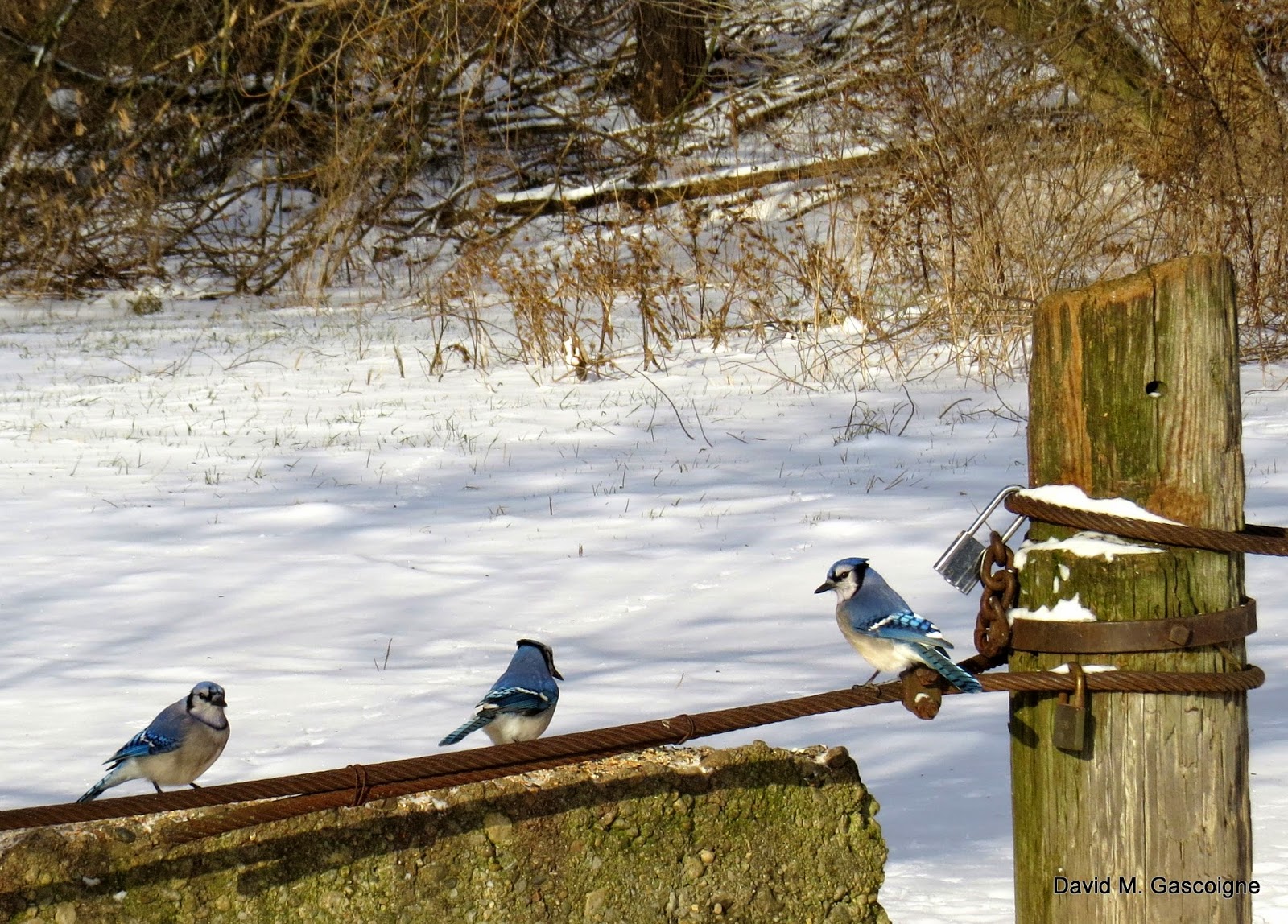6 January 2015
Right now we are going through a cold snap (and it is predicted to stay that way all week) but Miriam and I decided that it was not going to keep us from birding and we set off in bright sunshine with the temperature around minus 13°C.
I suspect that all birders have a local patch, an area where they bird close to home on a regular basis and we are no different. It is immensely satisfying in so many ways, foremost among them familiarity with the area and its habitats, thereby knowing where to look for various species during different seasons of the year.
No trip through Waterloo and Wellington Counties would be complete without numerous sightings of the Mennonites who make up such a pleasing segment of our population. This horse was no doubt anxious to get home to the warmth of the barn but was not being urged on by the driver of the buggy.
The kind of conveyance seen in the picture above is called a Dochwegli, although I confess to not knowing if that is the correct spelling (I suspect not), but it is lingua france in the Pennsylvania German language spoken by the Old Order Mennonites and I am not sure whether there is an authentic spelling. The language now used, in the same way that Yiddish developed into a rich language all of its own, is a fusion of many influences.
This picture was taken on Martin Creek Road in Woolwich Township, an area mere minutes from our home. At different times of the year it is very productive from a birding standpoint and one of the signature species in the winter is Rough-legged Buzzard Buteo lagopus. We saw our first bird on Martin Creek Road, but were unable to get a picture of this very striking bird of prey. It is extremely wary of humans and takes flight at the slightest hint of perceived danger. A very handsome dark morph individual was perched on a utility pole and we drove up to it with the window open. We stopped to try to get our first shots at quite a distance but the moment we stopped the car and poked the camera out of the window the bird took off. Neither Miriam nor I have ever succeeded in getting a decent picture of a Rough-leg. We'll just keep trying I guess.
On Three Bridges Road, this male House Sparrow Passer domesticus was puffed up against the cold.
We know a place on Three Bridges Road near the weir on the Conestogo River where people leave seed for the birds, and even cat food for an outdoor cat which is often present. So, it is predictable that birds will be there, attracted by the seed and the suet, especially on so cold a day.
When we first arrived a single Blue Jay Cyanocitta cristata was present and we reminded ourselves what a magnificently handsome bird this is, often overlooked because of its familiarity.
Within minutes it was joined by a second bird.
And then there were three.
Both a male and a female Downy Woodpecker Picoides pubescens were hitching up and down a tree and dropping down onto the seed, but we only managed pictures of the male.
The wall served as a fine surface to ascend from feeding on the ground.
This picture shows a Black-capped Chickadee Poecile atricapillus flying off in the background.
Both male and female Northern Cardinals Cardinalis cardinalis were present, at times three males together, providing an incredible burst of colour. The first two pictures below are of males, the third one is a female.
There were two Mourning Doves Zenaida macroura and for most of the time they were simply hunkered down against the cold. However, they did take time to feed in short bursts. In prolonged periods of severe cold Mourning Doves can lose their toes due to frostbite.
American Tree Sparrow Spizella arborea is right at home in these conditions for it breeds in the far north and spends the winter here. It is a delightful little bird.
In the following image you can clearly see the bicoloured mandible and central breast spot, both key identifying characters for this species.
Here it is seen feeding side by side with a female House Sparrow.
Dark-eyed Junco is another species well adapted to spending the winter at our latitude and seems never to suffer even in the coldest of weather.
This is the view looking downstream on the Conestogo River close by to where the pictures were taken.
We thought that these teasels coated in snow looked particularly attractive at Glen Allen.
And here is another view of the Conestogo River, this time in the hamlet of Glen Allen.
Back in Woolwich Township on the way home we spotted a flock of fifty-seven Wild Turkeys Meleagris gallopavo and did the best we could to photograph them in a field of corn stubble, but the distance and the light were not ideal.
The temperature tomorrow is not forecast to exceed about minus 15 but we'll be out and about again regardless. Today we saw a large flock of Horned Larks Eremophila alpestris but we have no photographs to show for it. Perhaps tomorrow will be our day!































0 Yorumlar